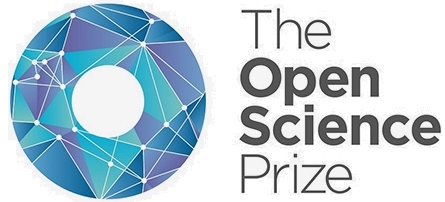Genomic tracking of SARS-CoV-2 evolution and spread
Trevor Bedford (@trvrb)
Associate Professor, Fred Hutchinson Cancer Research Center
10 Sep 2020
COVID-19 Summer Scientific Series
Bill & Melinda Gates Foundation
Slides at: bedford.io/talks


Significant fog of war. Genomic approaches offer orthogonal data source to understand the pandemic.
Epidemic process

Sample some individuals

Sequence and determine phylogeny
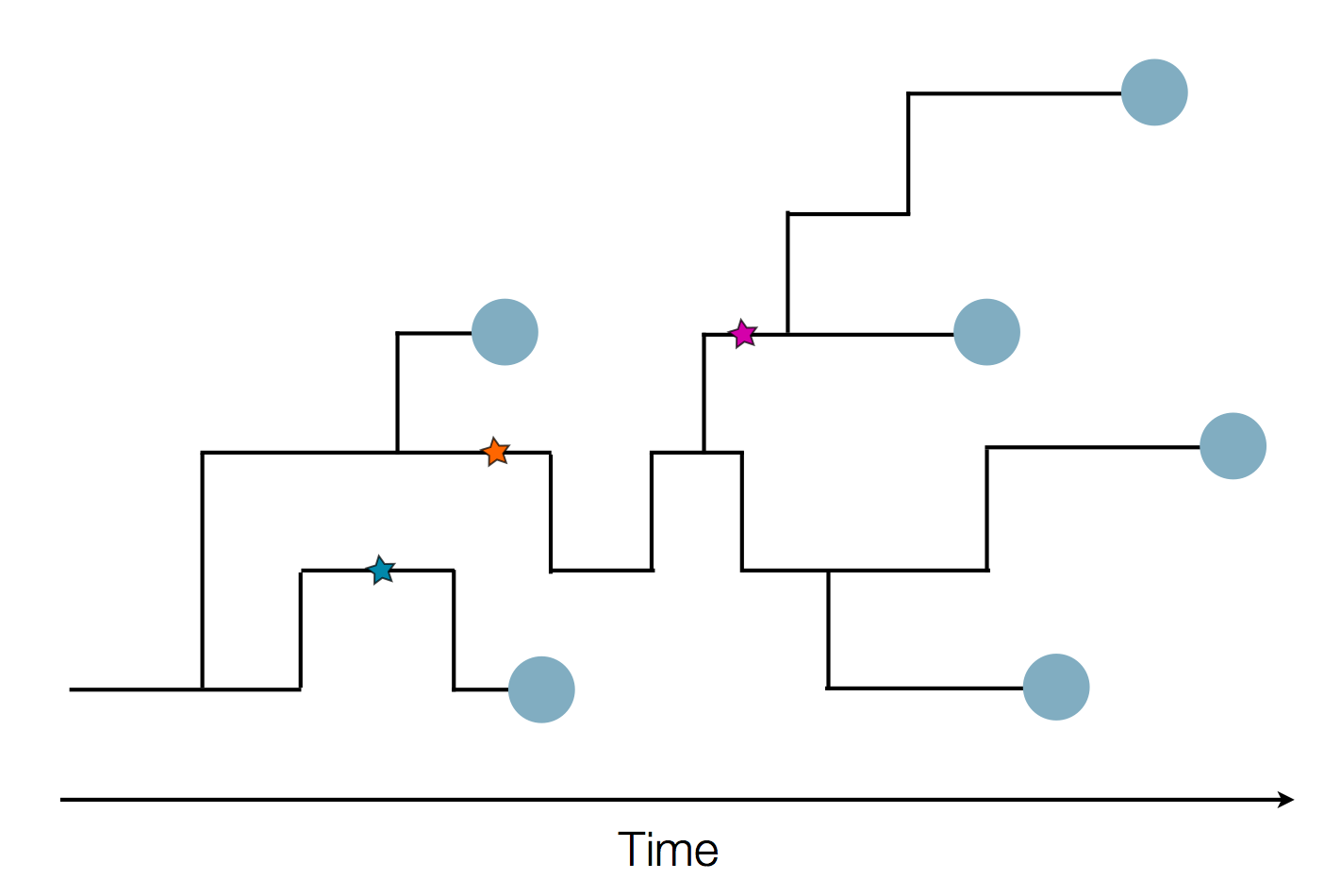
Sequence and determine phylogeny

Detection and sequencing of SARS-CoV-2 in January
Jan 11: First five genomes showed that the outbreak was caused by a novel SARS-like coronavirus

Jan 19: First 12 genomes from Wuhan and Bangkok lack genetic diversity
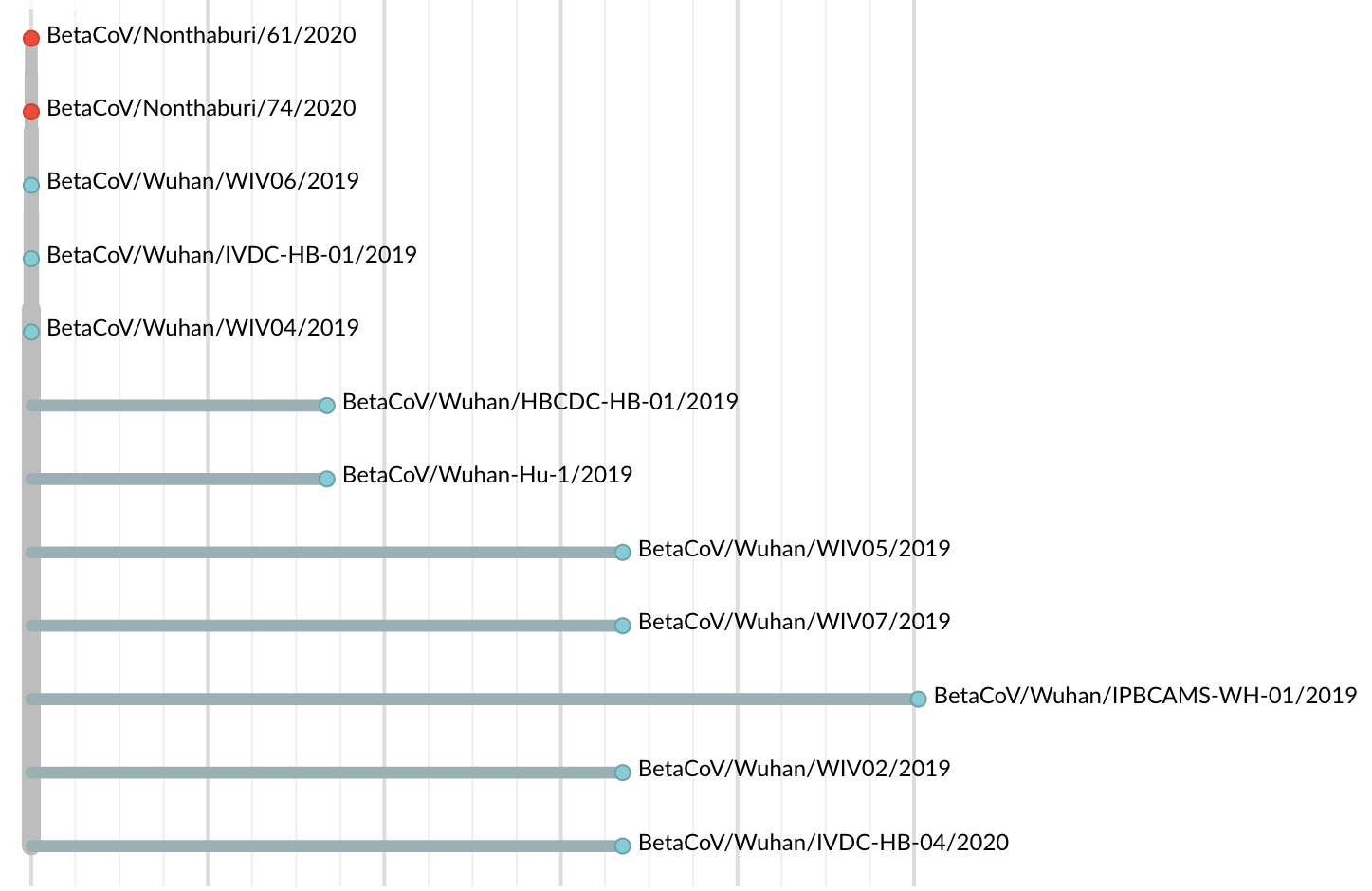
Single introduction into the human population between Nov 15 and Dec 15 and human-to-human epidemic spread from this point forward
😧
Spent the week of Jan 20 alerting public health officials, and since then have aimed to keep nextstrain.org up-to-date
Nextstrain
Project to conduct real-time genomic epidemiology and evolutionary analysis of emerging epidemics
with
![]() Richard Neher,
Richard Neher,
![]() James Hadfield,
James Hadfield,
![]() Emma Hodcroft,
Emma Hodcroft,
![]() Thomas Sibley,
Thomas Sibley,
![]() John Huddleston,
John Huddleston,
![]() Louise Moncla,
Louise Moncla,
![]() Cassia Wagner,
Cassia Wagner,
![]() Miguel Paredes,
Miguel Paredes,
![]() Misja Ilcisin,
Misja Ilcisin,
![]() Kairsten Fay,
Kairsten Fay,
![]() Jover Lee,
Jover Lee,
![]() Allison Black,
Allison Black,
![]() Colin Megill,
Colin Megill,
![]() Sidney Bell,
Sidney Bell,
![]() Barney Potter,
Barney Potter,
![]() Charlton Callender
Charlton Callender
Nextstrain architecture
All code open source at github.com/nextstrain
Two central aims: (1) rapid and flexible phylodynamic analysis and
(2) interactive visualization

Rapid build pipeline for 3000 SARS-CoV-2 genomes (timings are for a laptop)
- Align with MAFFT (~20 min)
- Build ML tree with IQTREE (~40 min)
- Temporally resolve tree and geographic ancestry with TreeTime (~50 min)
- Total pipeline (~2 hr)
Current data flow for SARS-CoV-2
- Labs contribute directly to GISAID (now have >95k full genomes)
- Nextstrain pulls a complete dataset from GISAID every 24 hours
- This triggers an automatic rebuild on Amazon Web Services
- We manually update new lat/longs, etc...
- We push this build online to nextstrain.org and tweet the update from @nextstrain
Dec/Jan: Emergence from Wuhan in ~Nov 2019
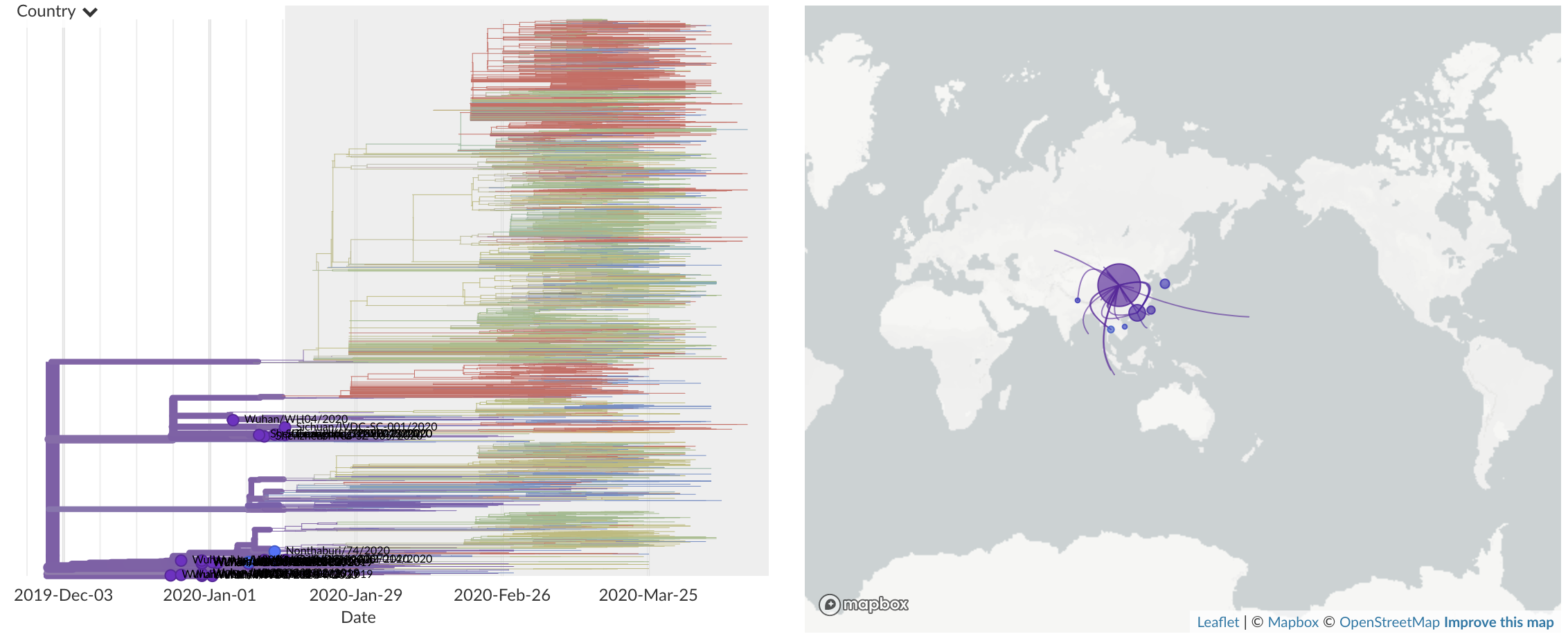
Jan/Feb: Spread within China and seeding elsewhere
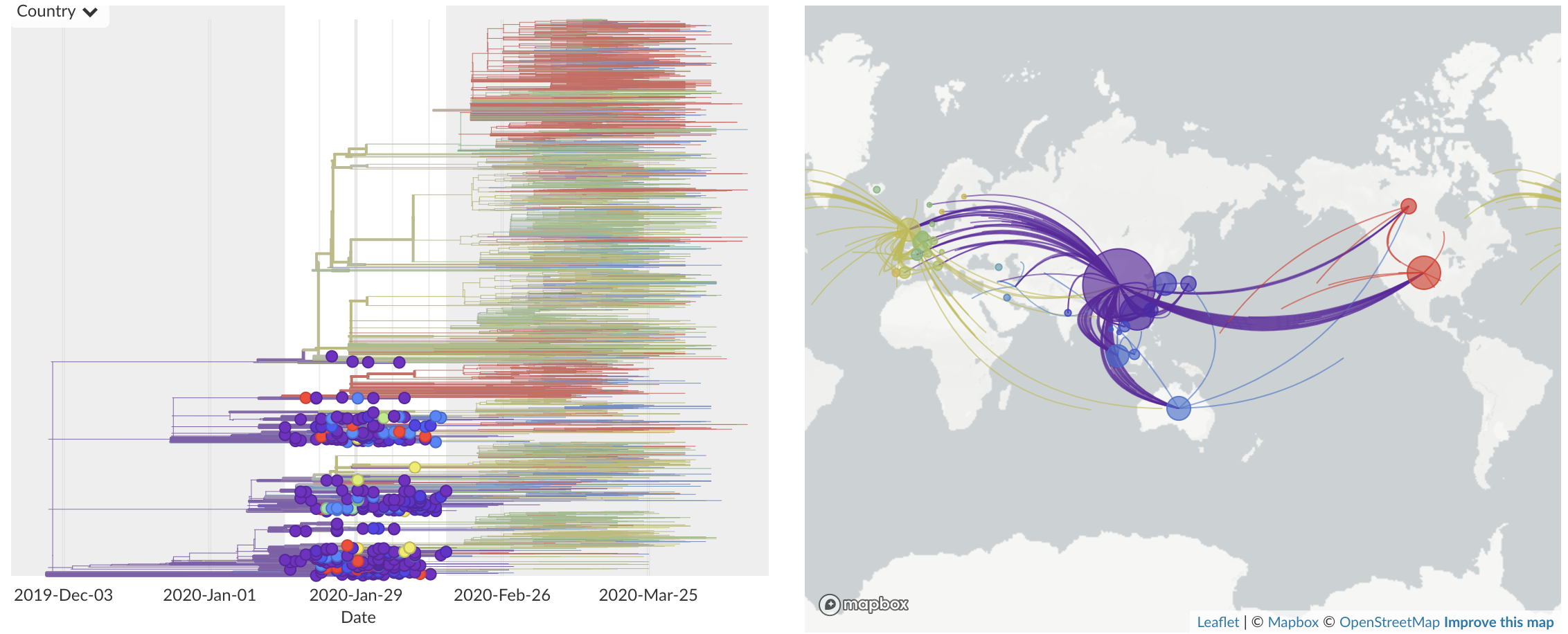
Feb/Mar: Epidemic spread within North America and Europe

Mar/Apr: Decreasing transmission with social distancing
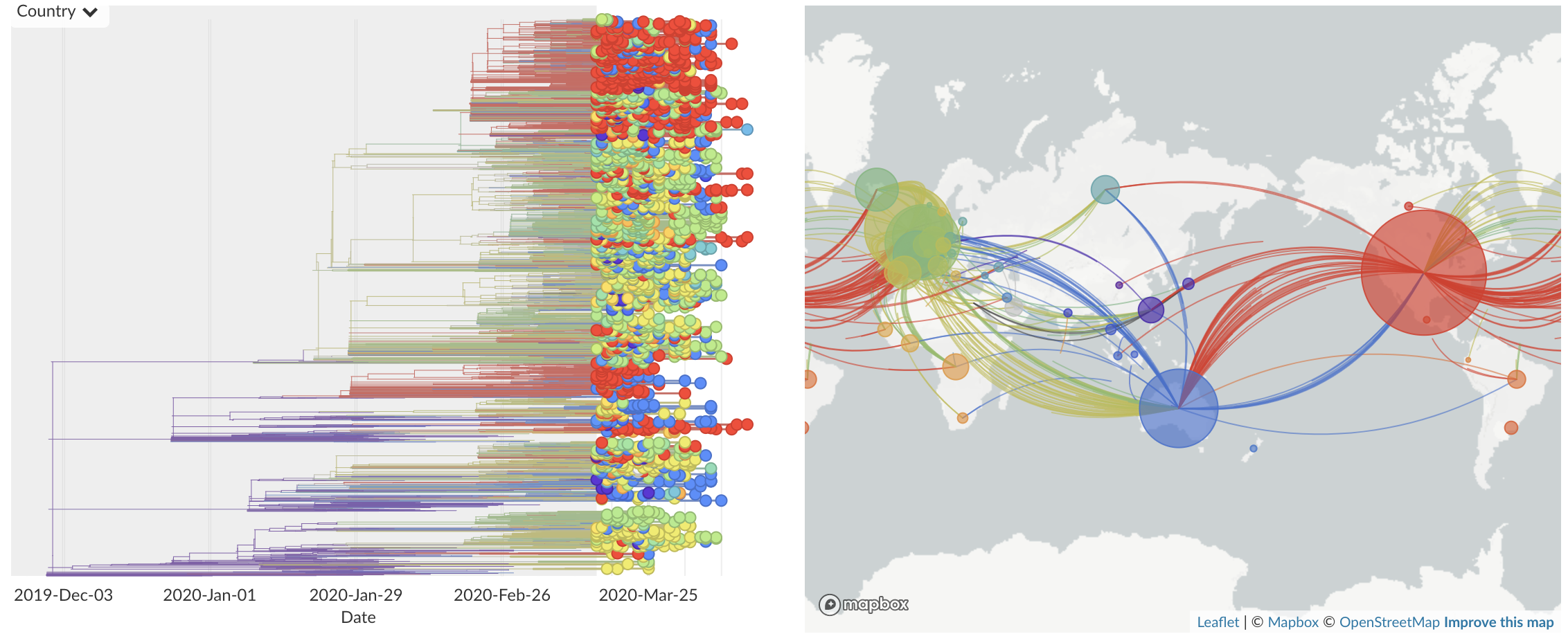
Epidemic in the USA was introduced from China in late Jan and from Europe during Feb
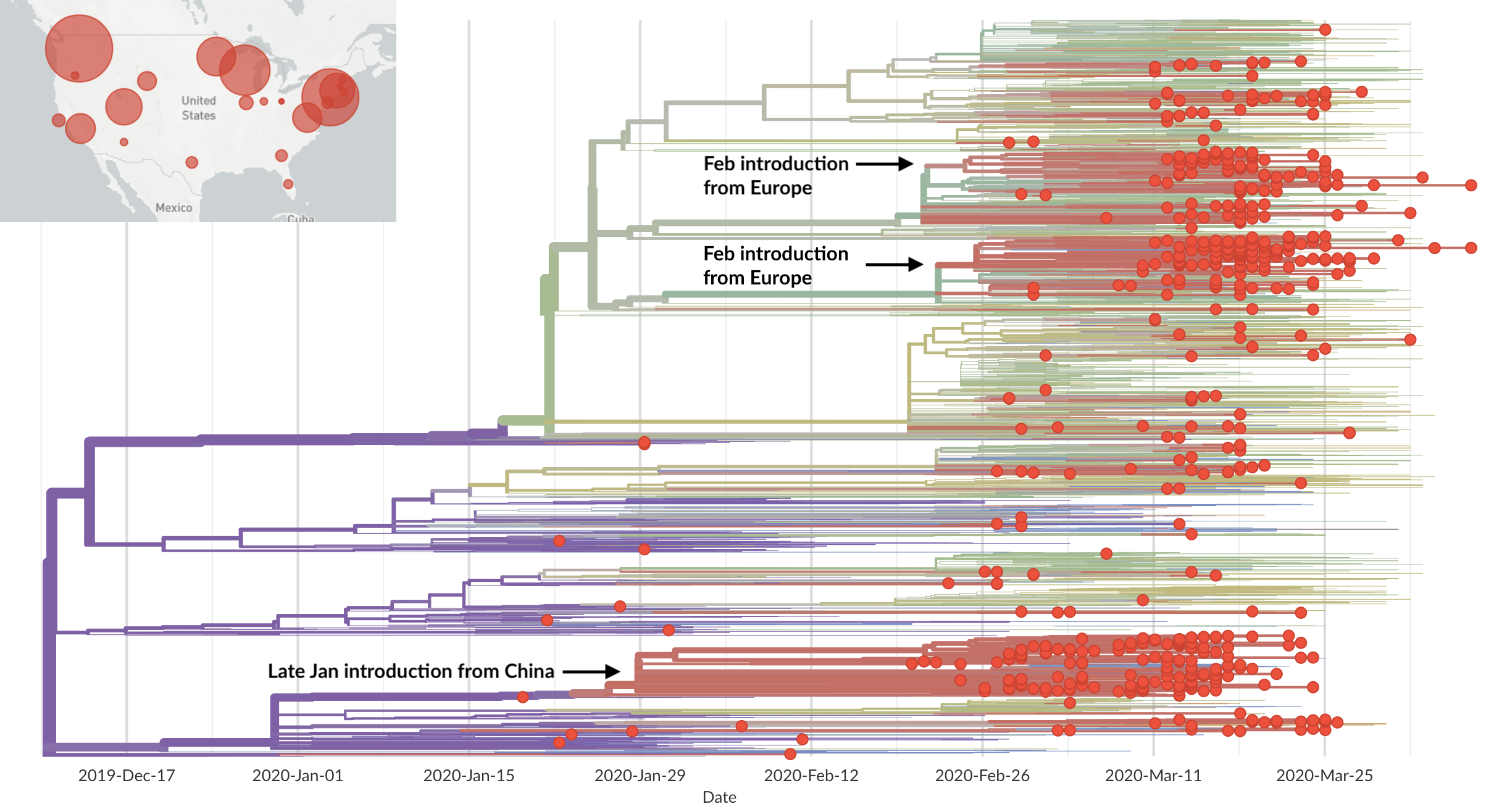
Once in the US, virus spread rapidly

Single introduction at the beginning of Feb quickly shows up throughout the country

Multiple introductions and subsequent community transmission in Africa

Sequencing immediately useful for epidemiological understanding, but selection and functional impacts should also be studied
Significant interest in spike mutation D614G

This mutation occurred in the initial European introduction

D614G is prevalent throughout Europe and mixed in US and Australia

D614G is increasing in frequency across states in US and Australia

D614G is increasing in frequency across states in US and Australia
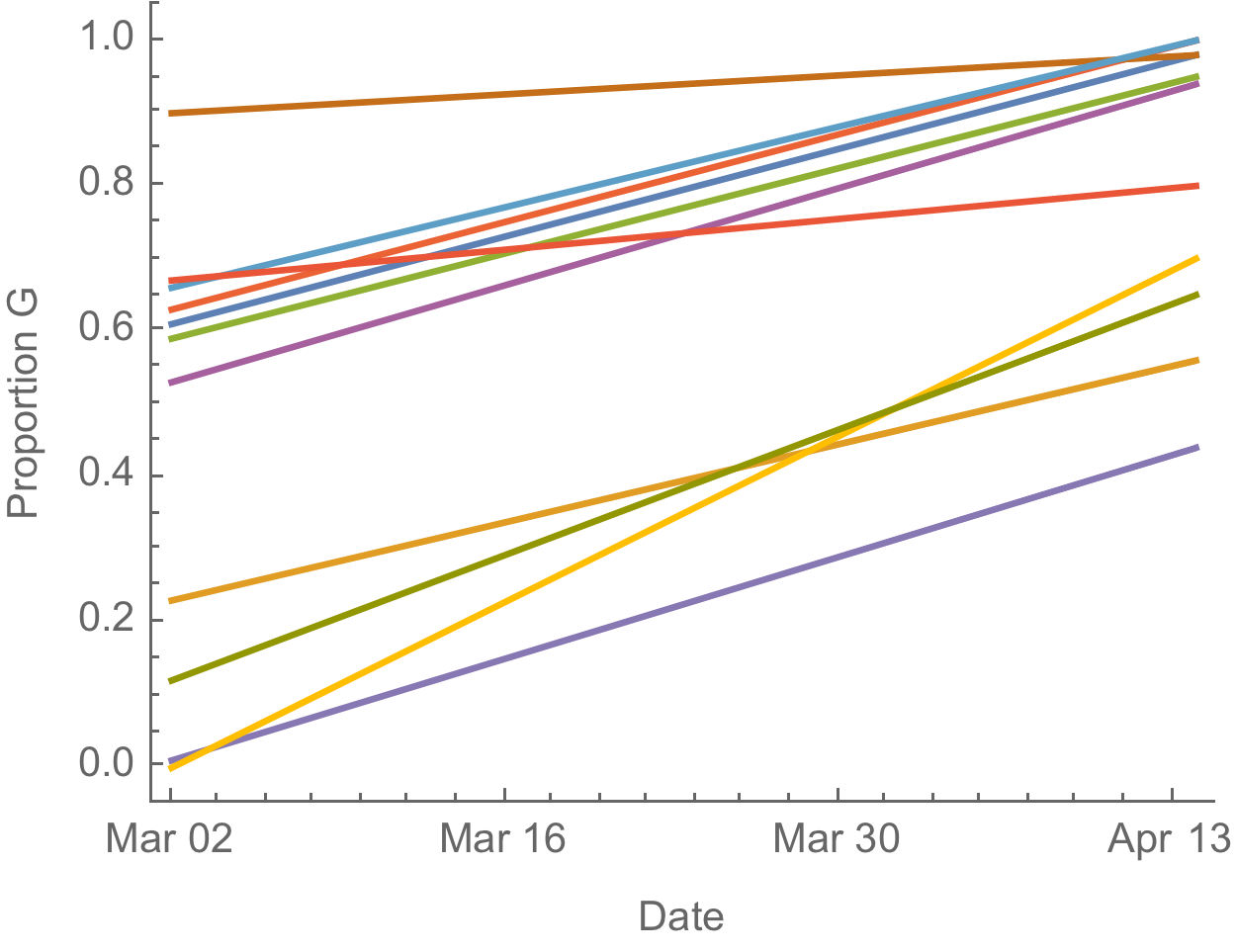
The success of D614G can be explained by either:
- D614G is more transmissible and has higher $R_0$
- founder effects and epidemiological confounding
Additional evidence from Ct values of clinical specimens
Sheffield, UK Seattle, USA

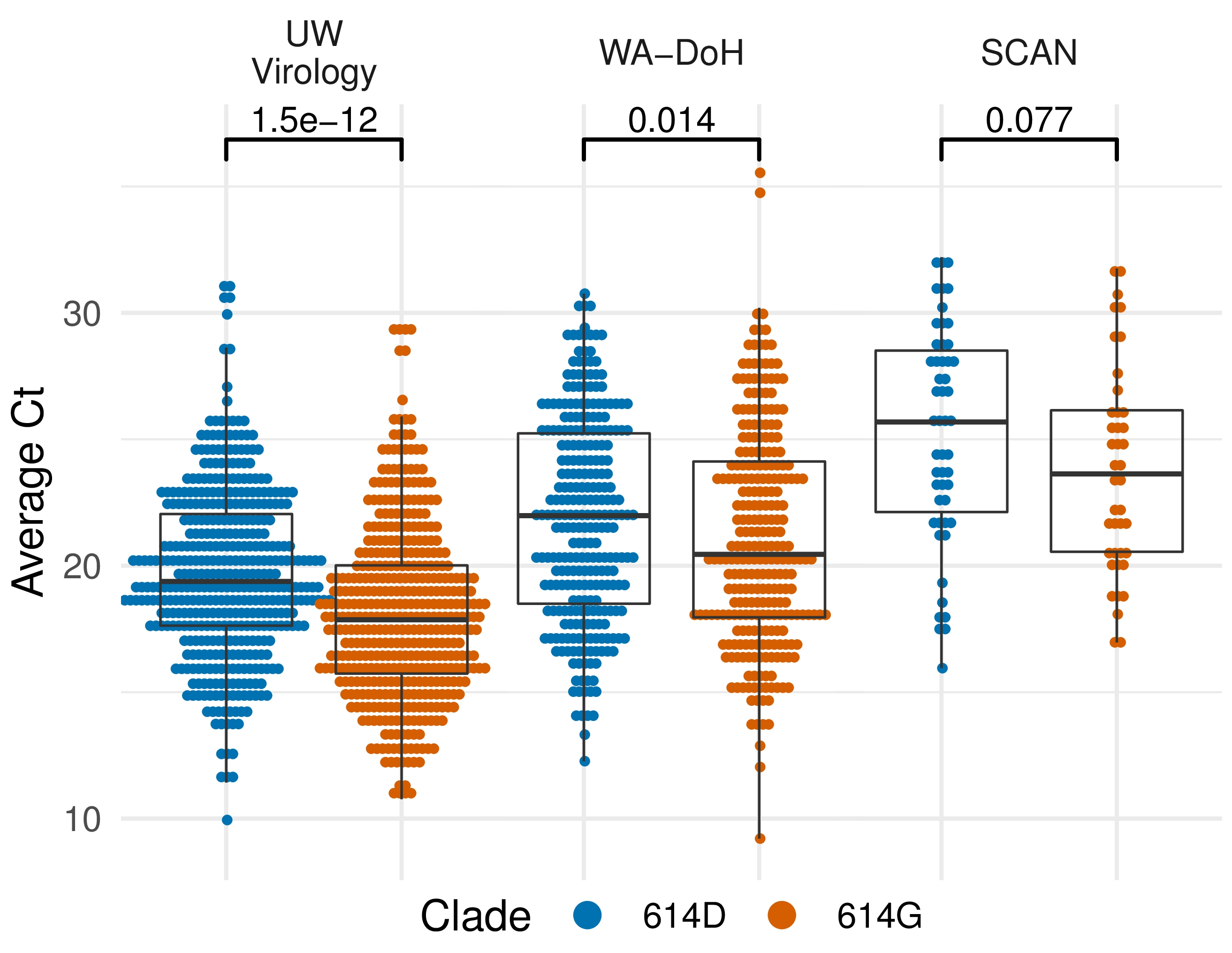
Repeated introductions to the UK suggest transmission advantage of D614G

Advancing genomic epidemiology
- Better methods for large datasets
- Distinguishing endogenous spread from importations
- Tying genomic epidemiology together with richer epi data to better understand local transmission
- Incorporating within-host variation to improve phylogenetic resolution
- Integrating clinical data to look for mutations that impact clinical outcomes
Surveillance is critically important to our ability to combat epidemics and pandemics
 Seattle Flu Study
Seattle Flu Study
Lead investigators: Helen Chu, Michael Boeckh, Janet Englund, Michael Famulare, Barry Lutz, Deborah Nickerson, Mark Rieder, Lea Starita, Matthew Thompson, Trevor Bedford, Jay Shendure
Co-investigators: Amanda Adler, Elisabeth Brandstetter, Roy Burstein, Shari Cho, Anne Emanuels, Kairsten Fay, Chris Frazar, Rachel Geyer, Peter Han, James Hadfield, Jessica Heimonen, Misja Ilcisin, Michael Jackson, Anahita Kiavand, Ashley Kim, Louise Kimball, Jack Henry Kotnik, Kirsten Lacombe, Jover Lee, Jennifer Logue, Victoria Lyon, Denise McCulloch, Jessica O’Hanlon, Matthew Richardson, Julia Rogers, Thomas Sibley, Monica Zigman Suchsland, Melissa Truong, Caitlin Wolf, Weizhi Zhong





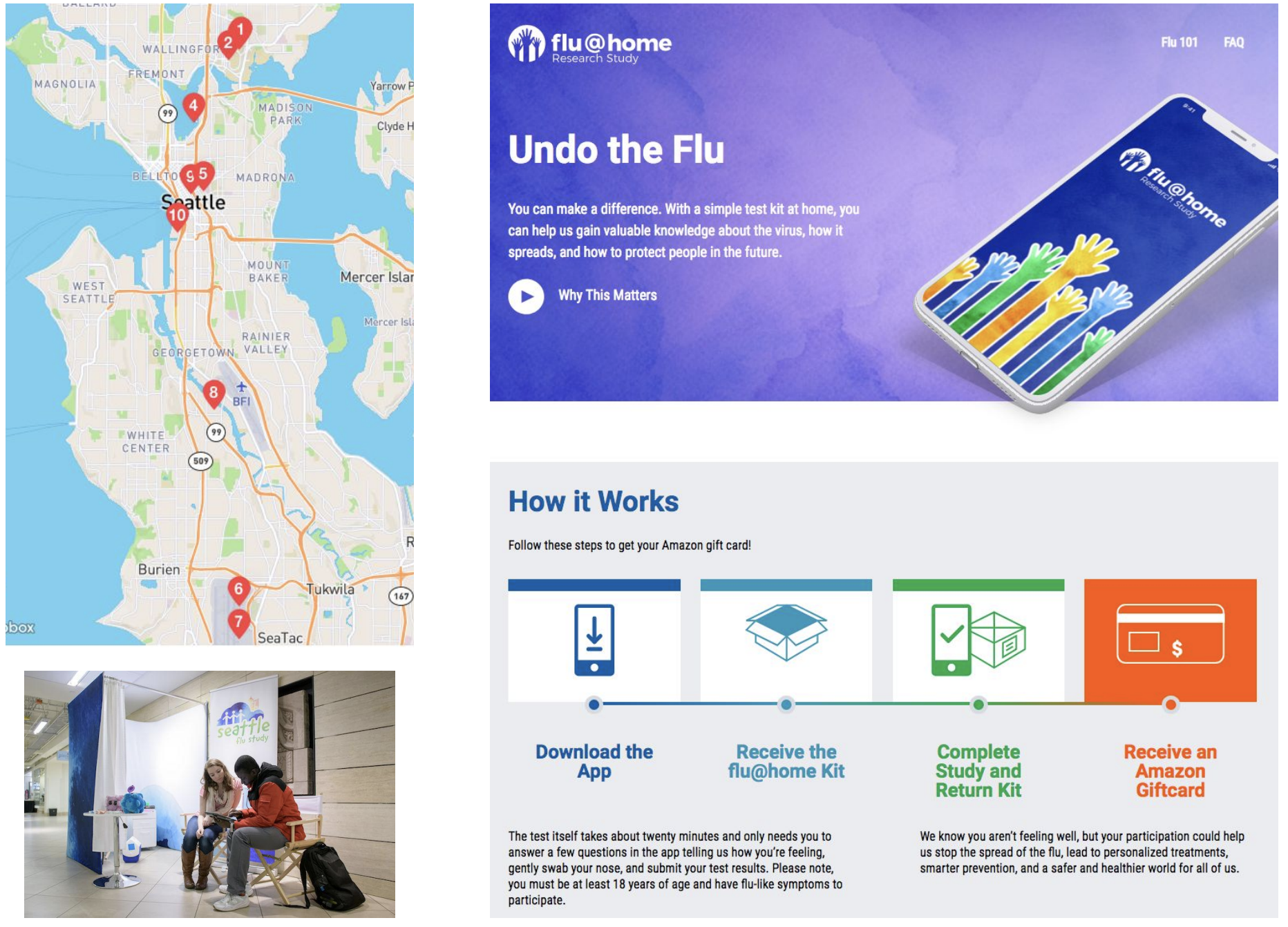
Screening of acute respiratory infections for SARS-CoV-2
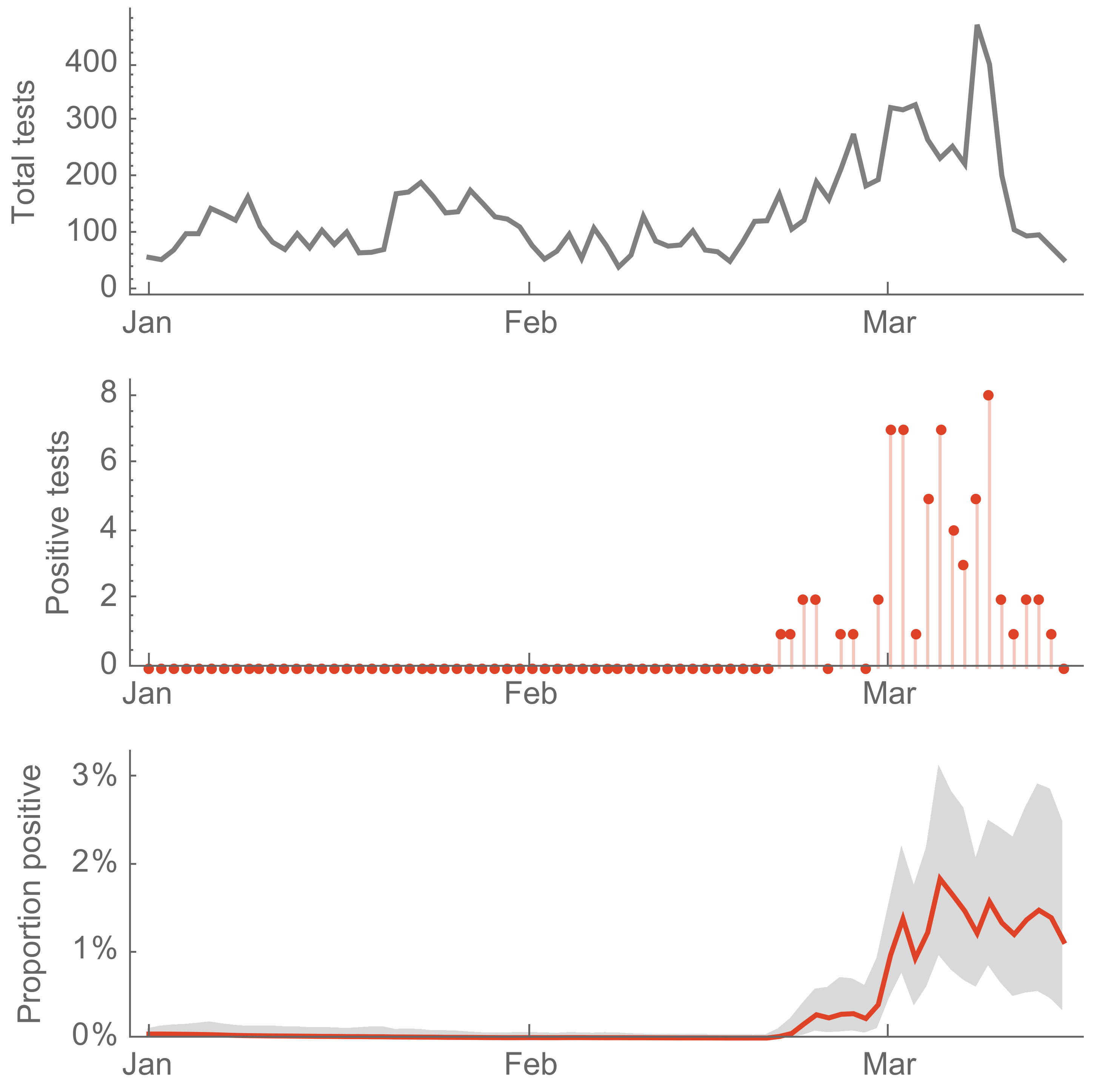
Sequencing of viruses collected prior to March 15 detects origins and rate of local spread
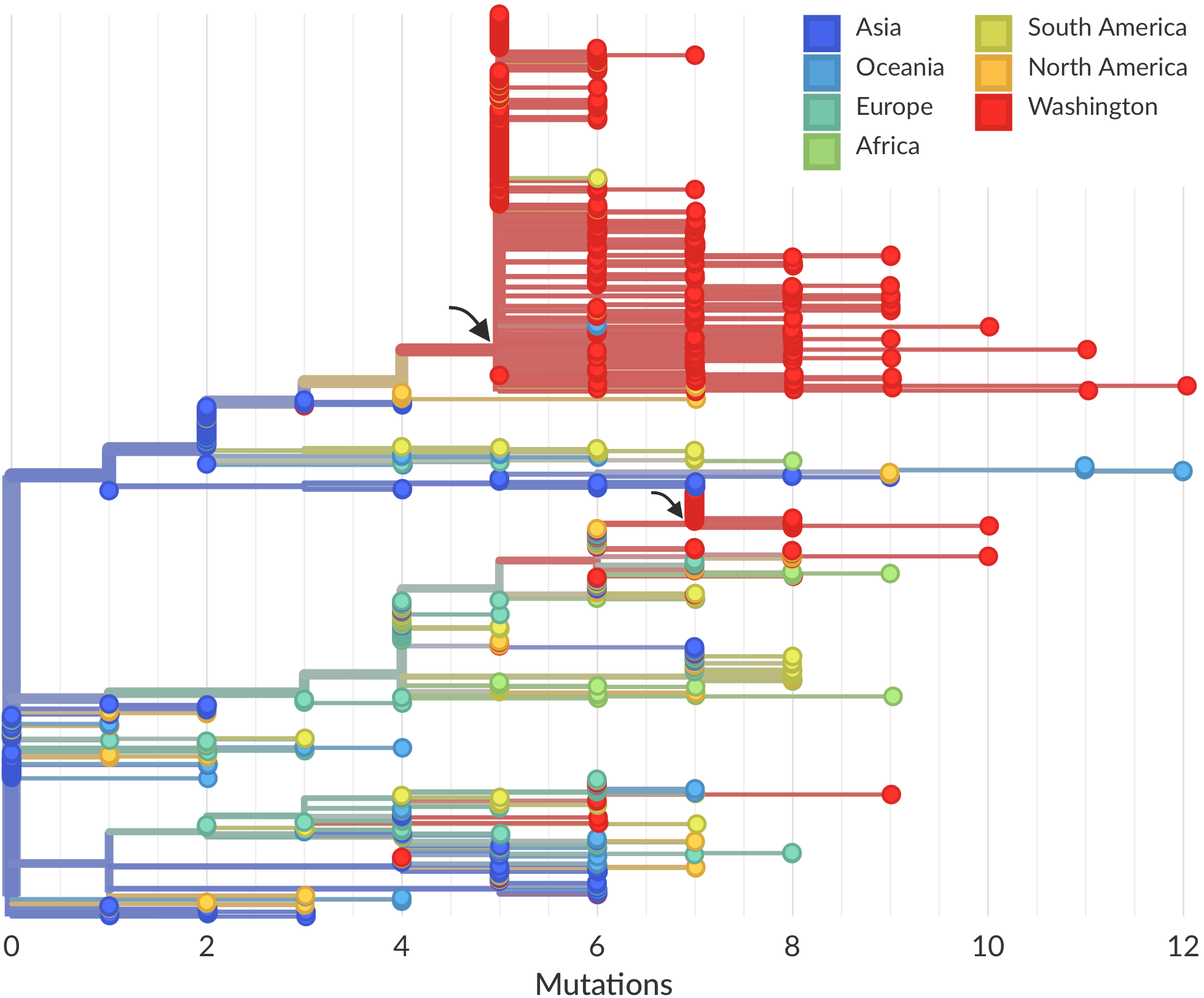
Sequencing of viruses collected prior to March 15 detects origins and rate of local spread
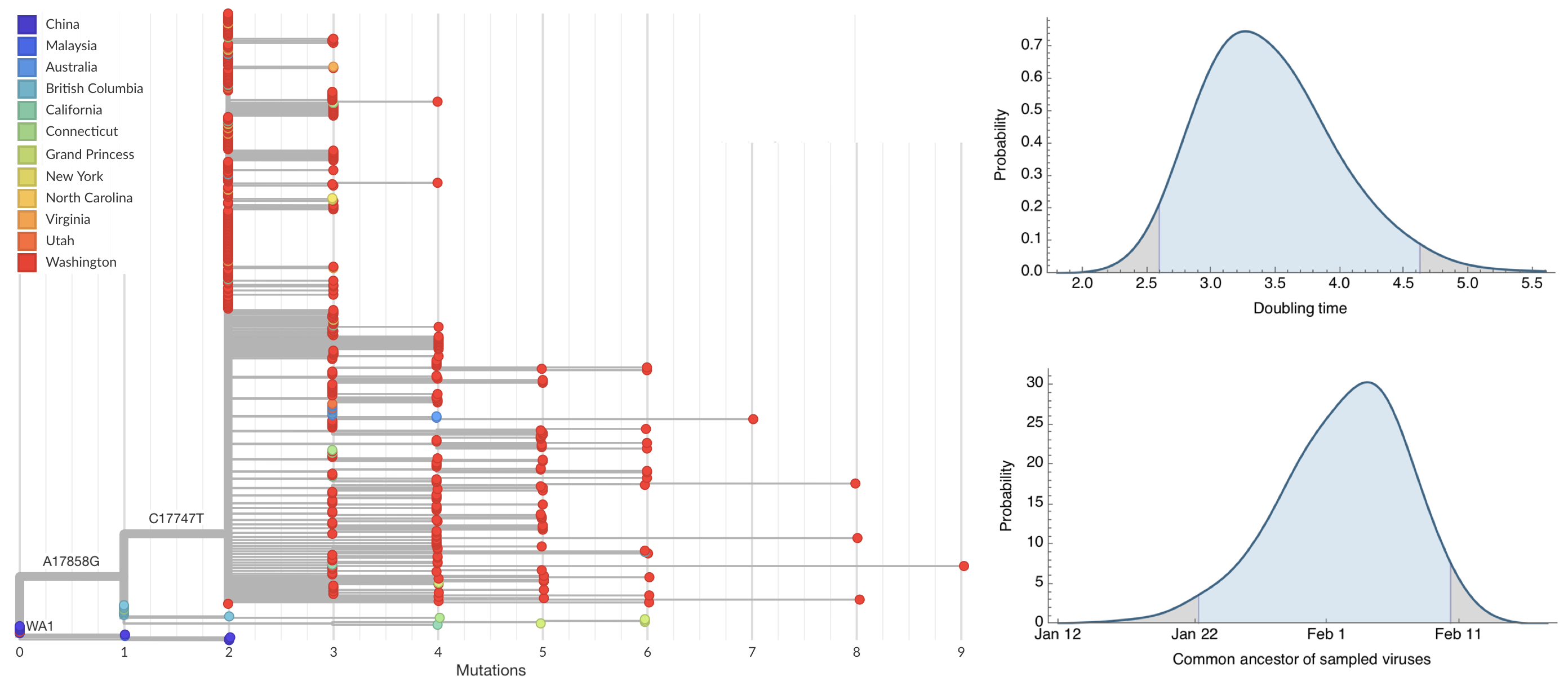


Continued sequencing reveals state-level transmission patterns
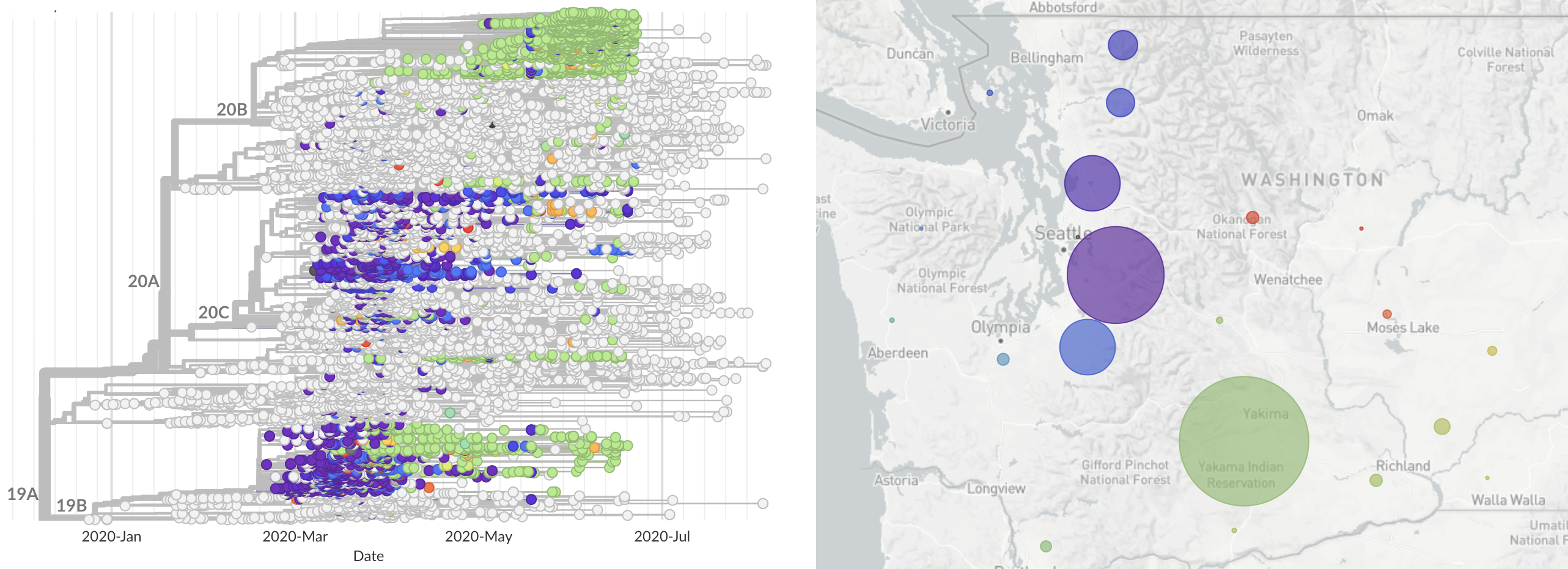
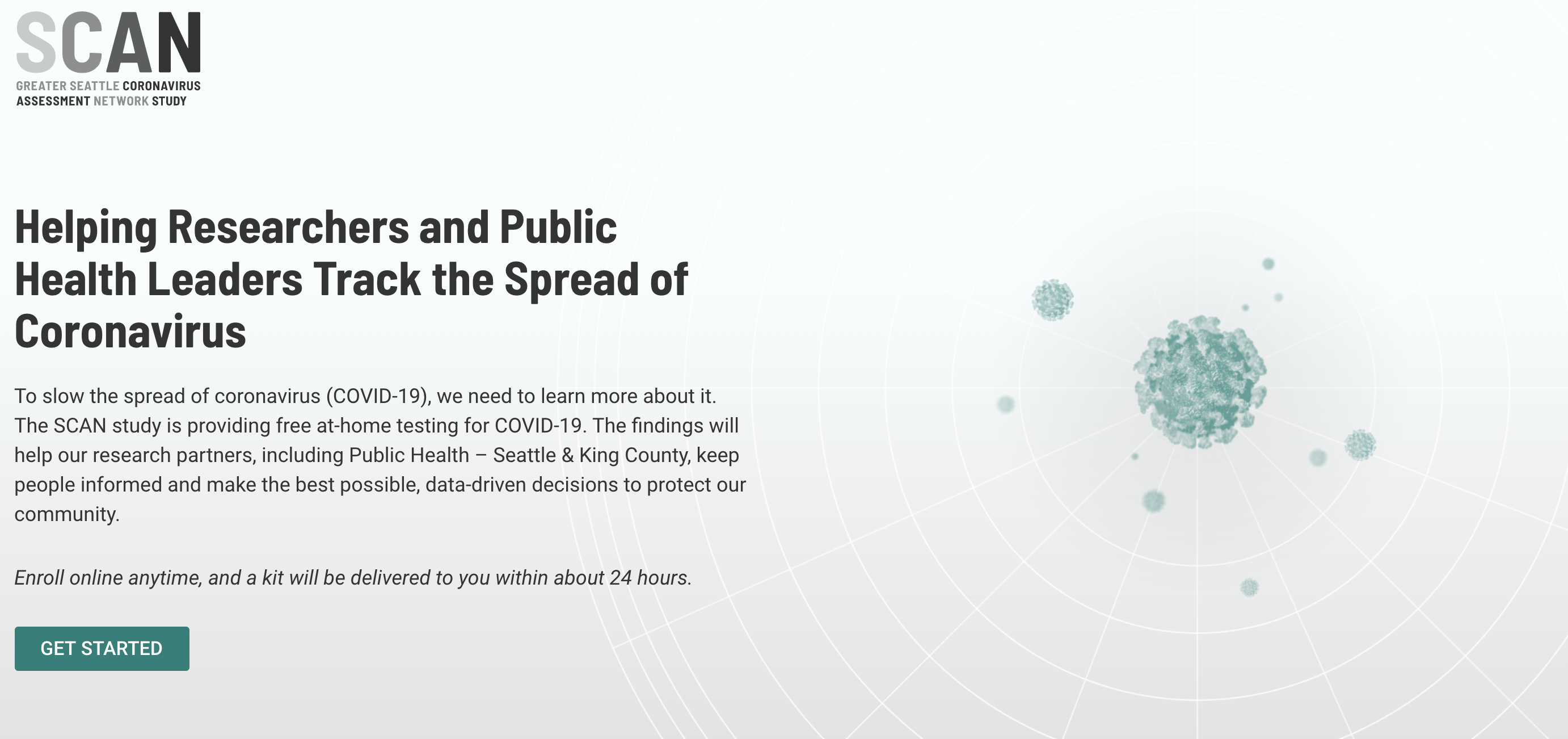
Prevalence estimates and supplemental testing
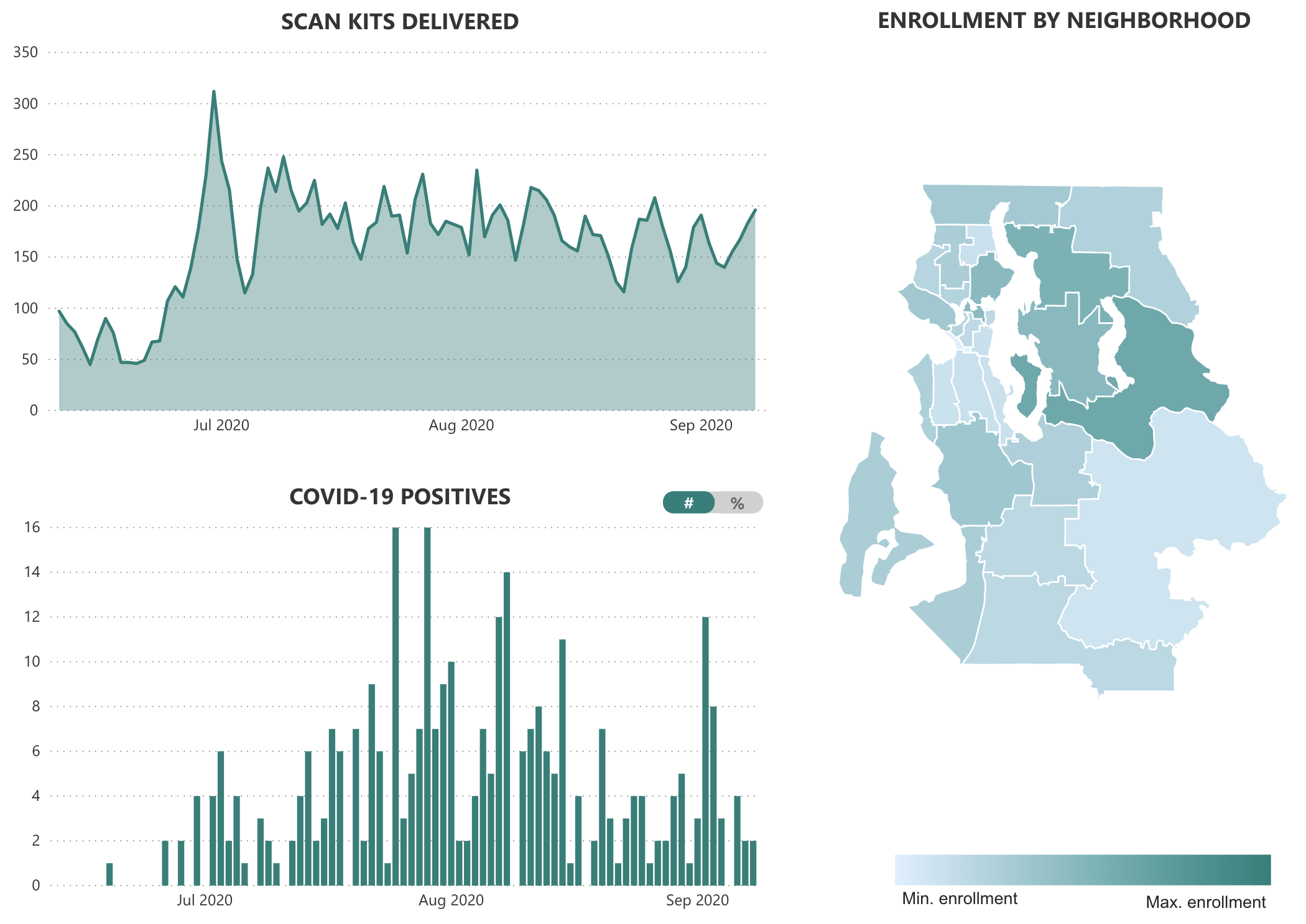
Continued SFS activities
- SCAN platform for distributed testing
- Improvements to cost and throughput of SARS-CoV-2 testing
- Focus on testing for mitigation in campus, schools and workplaces
- Continued investigation of circulation patterns across common respiratory pathogens
- Further integration of genome sequencing for epidemiological insights
Closing thoughts
- Pandemic warning systems need to be constructed on top of burden of endemic / seasonal pathogens
- Addressing need of endemic / seasonal diseases provides sample flows for detection of novel pathogens
- I don't think we need to be sequencing every acute respiratory infection, but we should be sequencing clusters and/or infections of unknown etiology
- Will require global surveillance / reporting to achieve
Acknowledgements
Genomic epi: Data producers from all over the world, GISAID and the Nextstrain team
Seattle Flu Study: Helen Chu, Michael Boeckh, Janet Englund, Michael Famulare, Barry Lutz, Deborah Nickerson, Mark Rieder, Lea Starita, Matthew Thompson, Jay Shendure, Amanda Adler, Jeris Bosua, Elisabeth Brandstetter, Kairsten Fay, Chris Frazar, Peter Han, Reena Gulati, James Hadfield, ShiChu Huang, Misja Ilcisin, Michael Jackson, Anahita Kiavand, Louise Kimball, Enos Kline, Kirsten Lacombe, Jover Lee, Jennifer Logue, Victoria Lyon, Kira Newman, Miguel Paredes, Thomas Sibley, Monica Zigman Suchsland, Cassia Wagner, Caitlin Wolf
Bedford Lab:
![]() Alli Black,
Alli Black,
![]() John Huddleston,
John Huddleston,
![]() James Hadfield,
James Hadfield,
![]() Katie Kistler,
Katie Kistler,
![]() Louise Moncla,
Louise Moncla,
![]() Maya Lewinsohn,
Maya Lewinsohn,
![]() Thomas Sibley,
Thomas Sibley,
![]() Jover Lee,
Jover Lee,
![]() Kairsten Fay,
Kairsten Fay,
![]() Misja Ilcisin,
Misja Ilcisin,
![]() Cassia Wagner,
Cassia Wagner,
![]() Miguel Paredes,
Miguel Paredes,
![]() Nicola Müller,
Nicola Müller,
![]() Marlin Figgins,
Marlin Figgins,
![]() Eli Harkins
Eli Harkins






